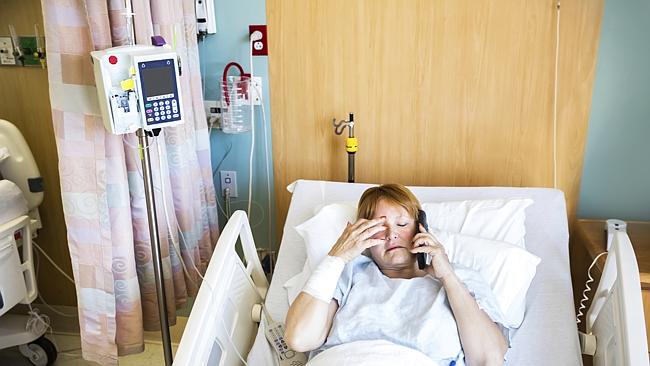
You never know if and when Source: Getty Images
WHEN you set off on that dream overseas holiday, you’ll have packed your bags, booked your accommodation and imagined yourself soaking up the sun on the beach a thousand times.
The last thing on your mind is getting hurt — or falling ill.
But for many travellers, it’s an unfortunately reality that things don’t always go to plan. So it’s helpful to know a bit about the health care systems of the countries you’re travelling to: Which ones offer the best medical treatment? And where would you be in really big trouble if you did need help?
International health organisation SOS claims to have the answers, analysing the different standards of care offered around the world for its Health Risk Map 2015.

The Health Risk Map 2015. Picture: SOS Source: Supplied
Click here to see the map in a larger view.
SOS is a medical and travel security risk services company that operates in 700 locations in 89 countries and has 1200 doctors on its team. It hopes the map will help companies and travellers determine the risks they face abroad when things go wrong.
In it, countries are colour-coded according to their risk levels: low (green), medium (yellow), high (orange) and extreme (red). Separately, there’s also a category for large, rapidly developing nations (brown).
Factors such as the threat of infectious disease, hygiene and sanitation conditions, accidents and the availability and quality of the local health infrastructure were taken into account.
Australia, New Zealand, the US and Europe were among those deemed to have good medical assistance, while Thailand, Morocco and Mexico were classified as medium risk.
Egypt, Cambodia and Tanzania were assessed as high risk while North Korea and much of Africa were considered extreme.

You don’t plan on getting hurt overseas, but accidents can happen. Source: Getty Images
The key to reading the chart:
BROWN: LARGE RAPIDLY DEVELOPING COUNTRIES
Countries where there is a vast difference between the high quality medical care available in major cities and low levels of care generally available throughout the rest of the country.
Medical assistance: In major cities – Selection of quality providers but evacuation is sometimes required. Elsewhere – Selection of best care available; case monitoring; and transfer to a higher quality facility. Moderate and severe illness/injury may require evacuations
GREEN: LOW RISK
International standard of care throughout. All tertiary-level, specialist and sub-specialist care widely available with high-quality emergency and dental services and a wide range of quality prescription drugs available. There is a low risk of infectious diseases
Medical assistance:
Medical referral; assistance with language and cultural differences; payment; but evacuation is rarely required.
YELLOW: MEDIUM RISK
High or international standard available from selected providers but other providers offer a lower standard of care. Adequate emergency services and dental care are usually available. There is some risk of waterborne diseases and diseases such as malaria and dengue fever may be present.
Medical assistance: Selection of quality providers and case monitoring while severe illness/injury may require evacuation.
ORANGE: HIGH RISK
These are countries with limited medical capabilities where emergency services and dental care may be basic. Access to quality prescription drugs may also be limited and, in some cases, counterfeiting and/or improper storage of drugs is an issue. Serious infectious diseases such as typhoid, cholera, dengue fever and malaria may pose a threat.
Medical assistance: Selection of best care available; case monitoring; and transfer to a higher quality facility. However, any condition requiring hospitalisation may require international evacuation.
RED: EXTREME RISK
Countries where healthcare is almost non-existent or severely overtaxed. There may be no emergency or dental services, and quality prescription drugs are usually not available. There is a high risk of food or waterborne infections while serious infectious diseases such as dengue, malaria, typhoid and cholera are common.
Medical assistance: Selection of best care available; case monitoring; and transfer to a higher quality facility. All but minor health issues may require international evacuation.

Be prepared. Source: Getty Images
The Government’s Smartraveller website also offers health and safety advice for those travelling overseas. It recommends measures such as staying up-to-date with vaccinations, carrying a letter from your doctors detailing any medication you will need to take and making sure the medication is legal in the country you’re planning to visit.
Australians should also take along a small medical kit (including items such as antiseptic lotion, Band-Aids and insect repellent) and make sure to only use bottled water in locations where tap water is unsafe.
Originally published as World’s riskiest places to visit
